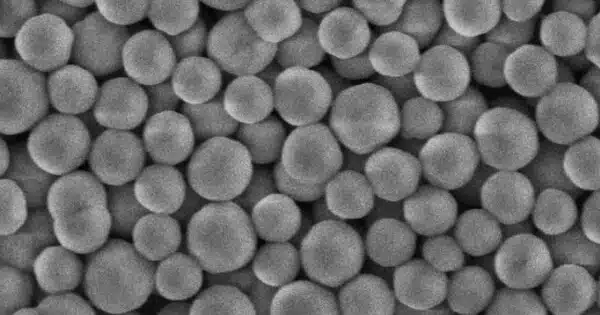Magnetic nanoparticles are nanoparticles that can be controlled by magnetic fields. These are microscopic particles with magnetic properties at the nanoscale, typically ranging in size from 1 to 100 nanometers. Such particles typically have two components: a magnetic material, which is often iron, nickel, or cobalt, and a chemical component with functionality. These nanoparticles are made of magnetic materials, most of which are ferrous or ferrimagnetic, such as iron, cobalt, nickel, or their derivatives. While nanoparticles have a diameter of less than one micrometer (usually 1-100 nanometers), microbeads have a diameter of 0.5-500 micrometers.
Magnetic nanobeads with a diameter of 50-200 nanometers are magnetic nanoparticle clusters formed of a number of individual magnetic nanoparticles. Magnetic nanoparticles offer a wide range of uses due to their small size and unique magnetic properties, including medicine, electronics, materials research, and environmental science.
Magnetic nanoparticles have distinct magnetic properties due to their size and composition. Depending on their size and the materials utilized, they may exhibit superparamagnetic or ferromagnetic activity.
Magnetic Properties
Magnetic nanoparticles have distinct magnetic properties due to their size and composition. Depending on their size and the materials utilized, they may exhibit superparamagnetic or ferromagnetic activity.
Magnetic nanoparticle clusters serve as the foundation for their subsequent magnetic assembly into magnetic nanochains. Magnetic nanoparticles have recently attracted a lot of attention due to their appealing properties, which could see potential applications in catalysis such as nanomaterial-based catalysts, biomedicine and tissue specific targeting, magnetically tunable colloidal photonic crystals, microfluidics, magnetic resonance imaging, magnetic particle imaging, data storage, and environmental remediation.
Application
- Biomedical Applications: These have gained significant attention in medicine and biotechnology. They are used in magnetic resonance imaging (MRI) as contrast agents to improve image quality. Additionally, they are employed in magnetic hyperthermia for cancer treatment, drug delivery systems, and magnetic cell separation techniques.
- Environmental Remediation: These are used in environmental science for the removal of contaminants from water and soil. They can be functionalized with specific surface coatings or ligands to target and adsorb pollutants, making them easier to remove from the environment.
- Data Storage: In the field of electronics, magnetic nanoparticles have potential applications in high-density data storage due to their small size and magnetic properties. They can be used in magnetic storage media to increase data storage capacity.
- Catalysis: In a variety of chemical reactions, magnetic nanoparticles are used as catalysts. Because of their large surface area and magnetic characteristics, they are good catalysts for hydrogenation, oxidation, and environmental catalysis.
Magnetic nanoparticles are a subject of current research due to their versatility, and their applications continue to develop across numerous scientific and technical domains. It is crucial to note, however, that the properties and behaviors of magnetic nanoparticles can vary greatly depending on their size, composition, and surface changes, making their uses highly suited to specific needs.














